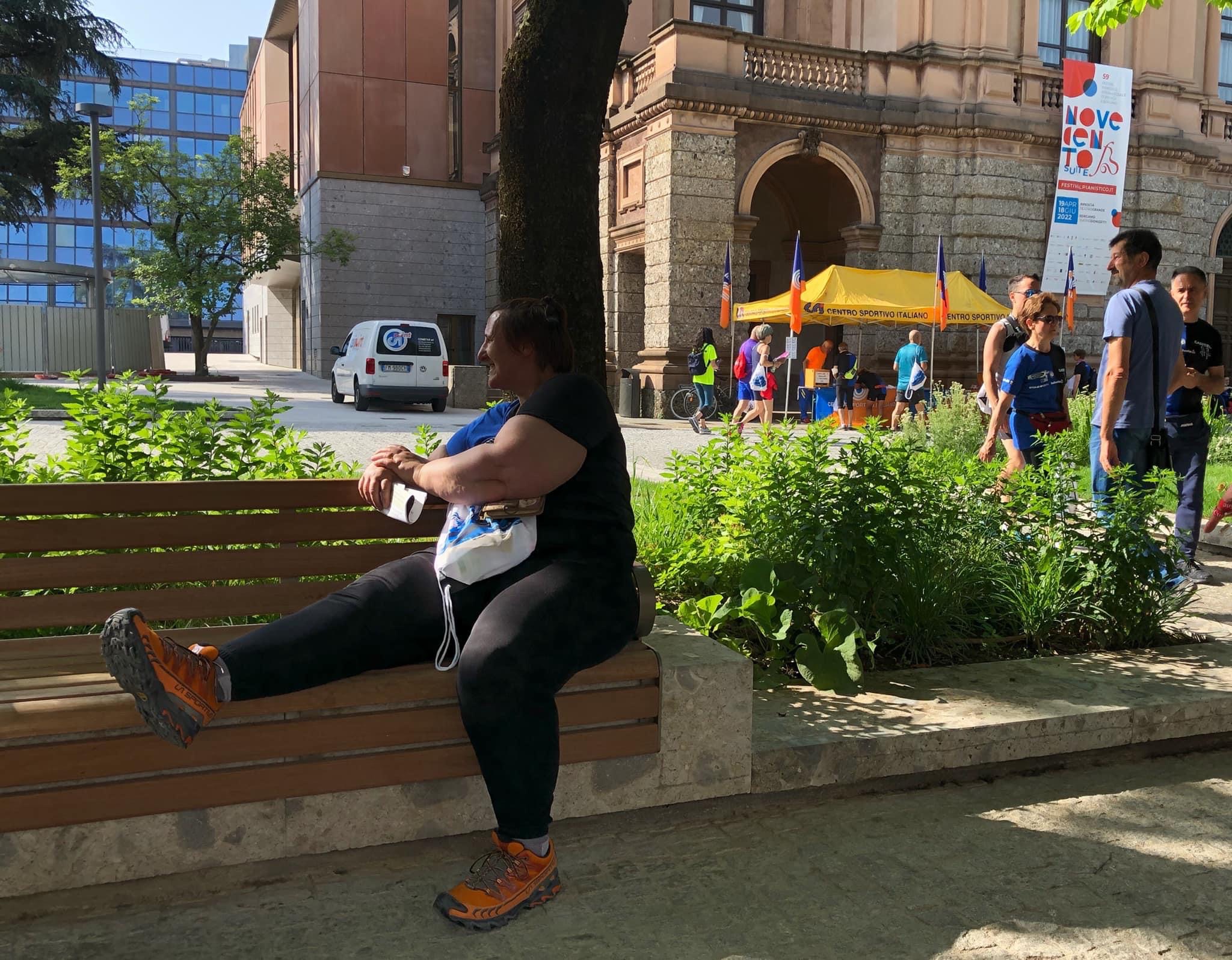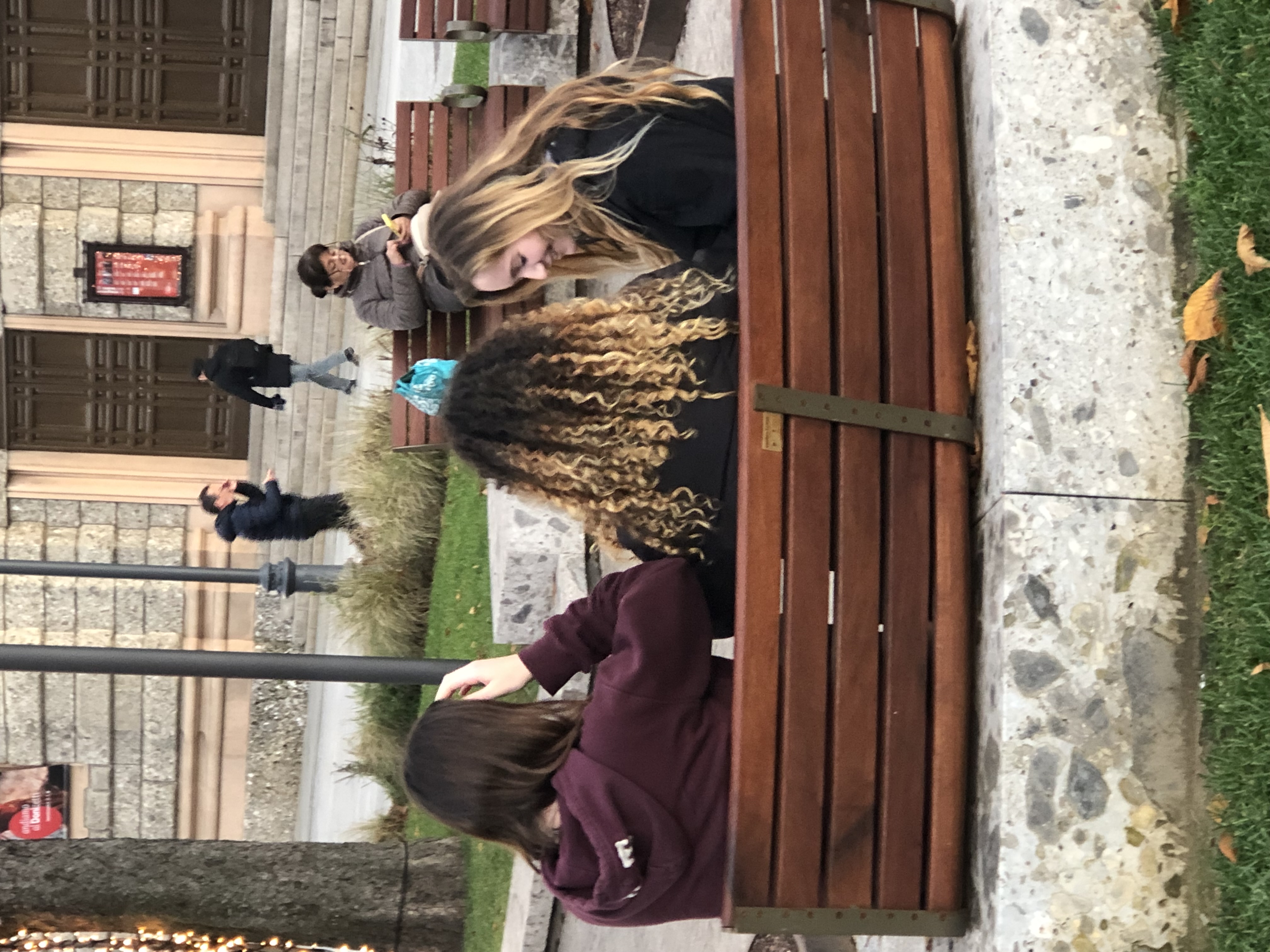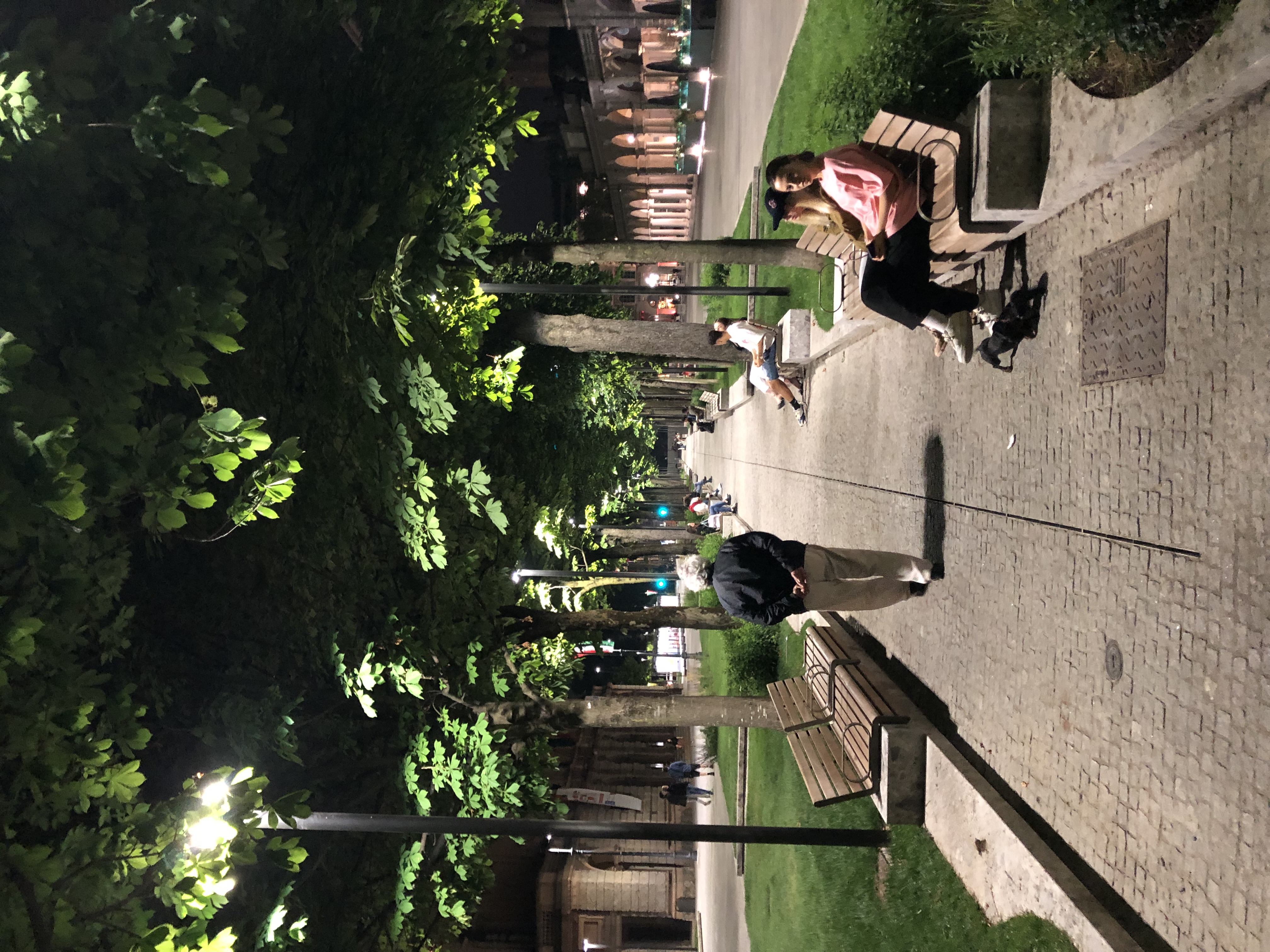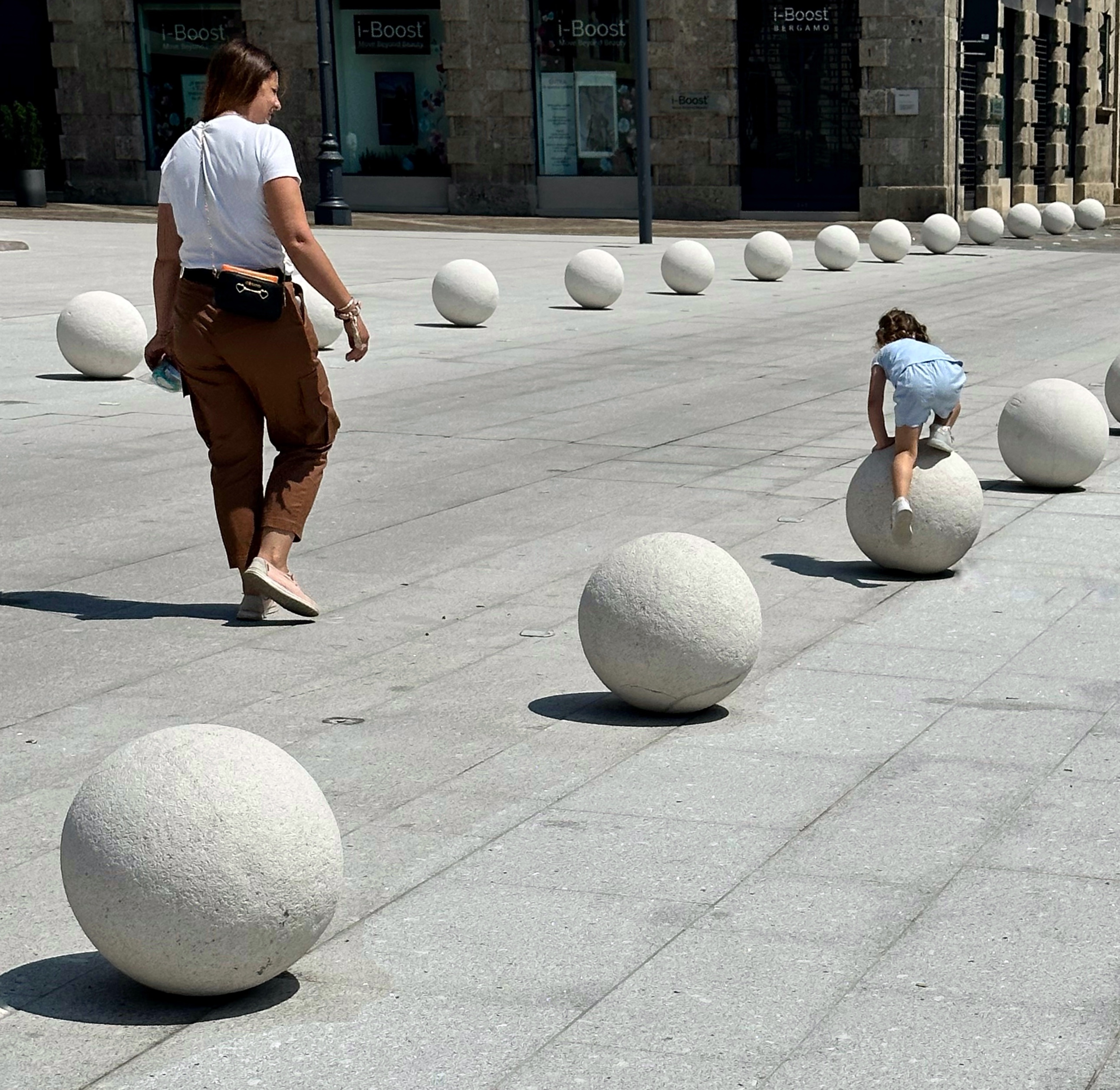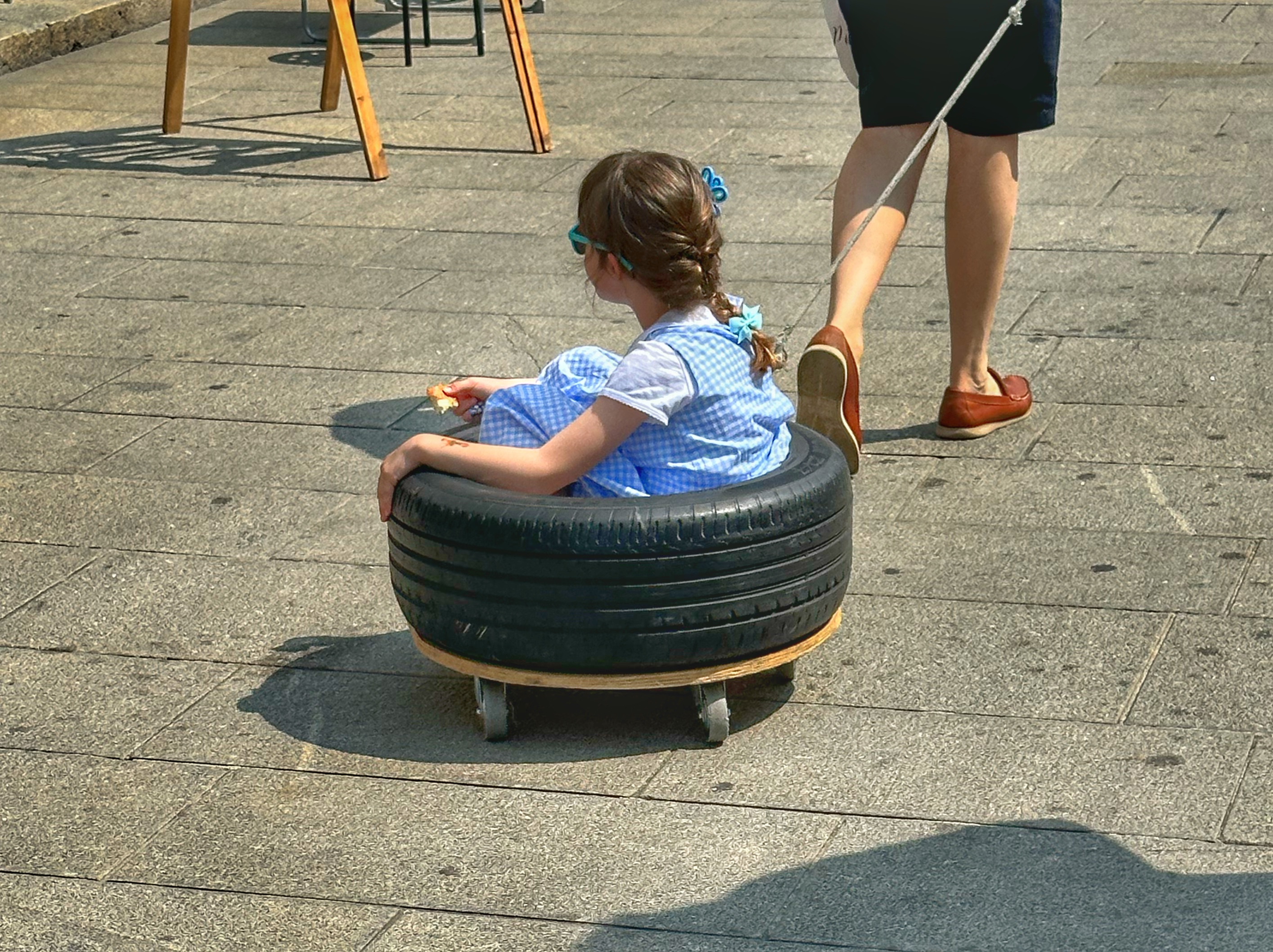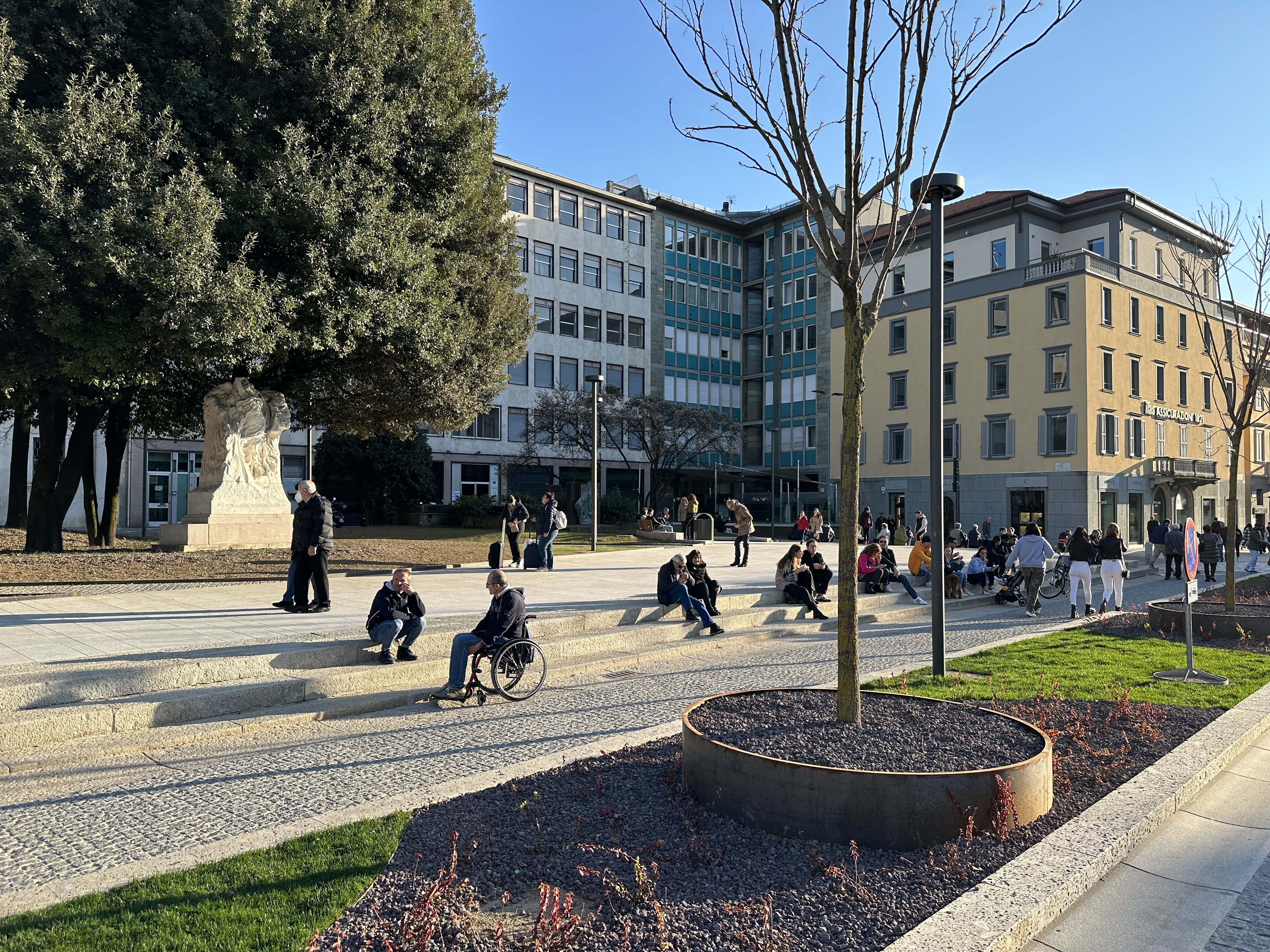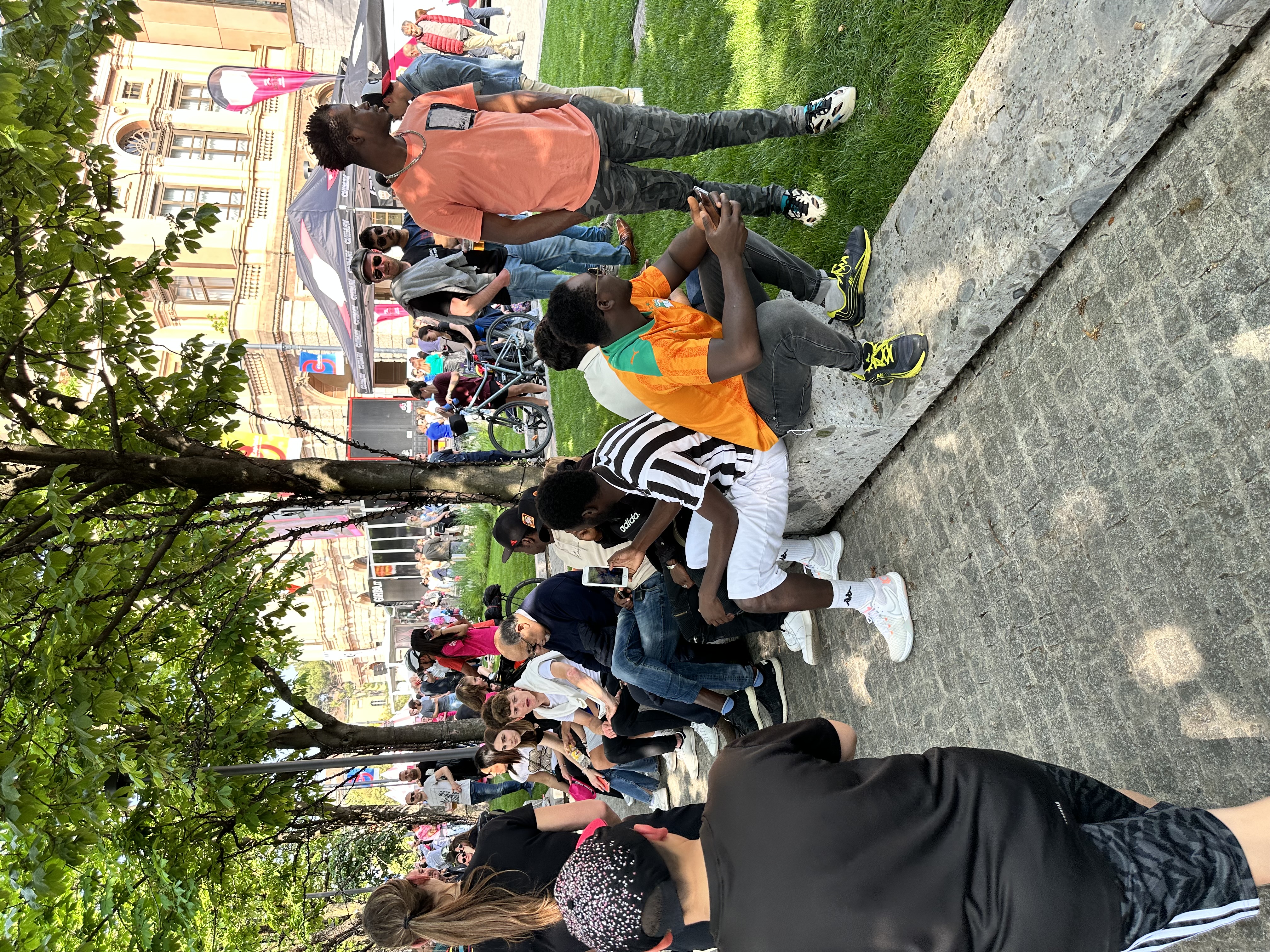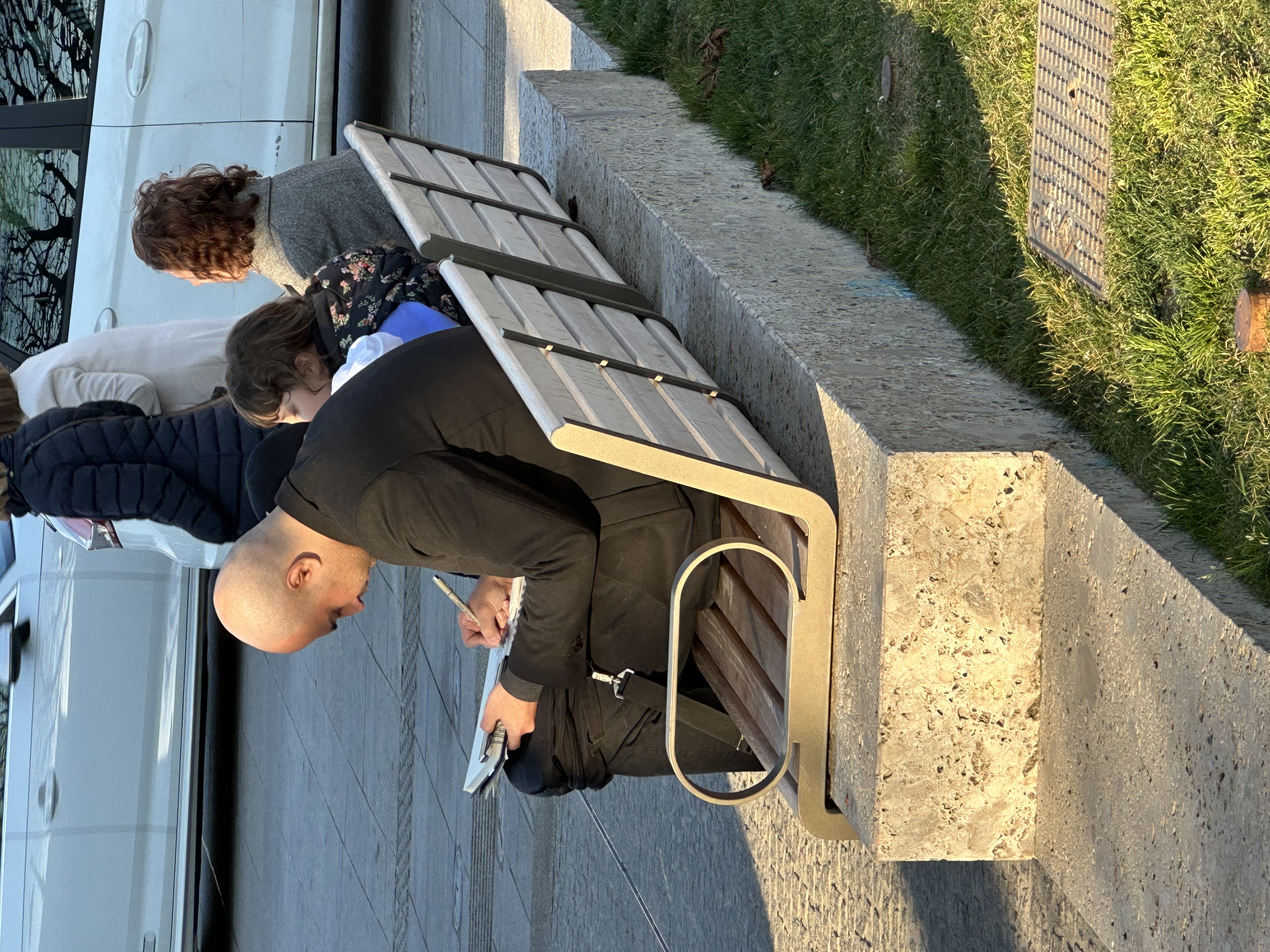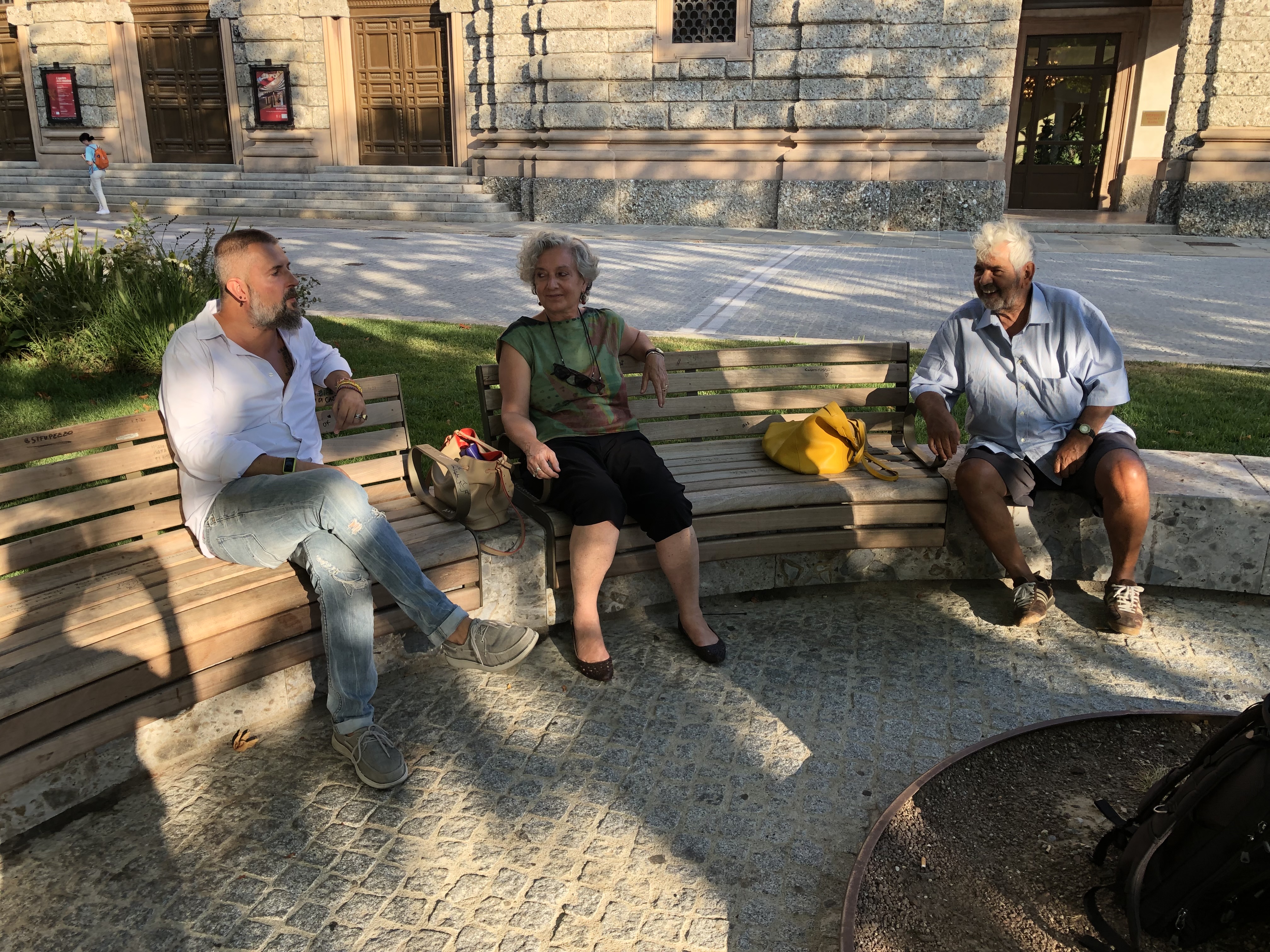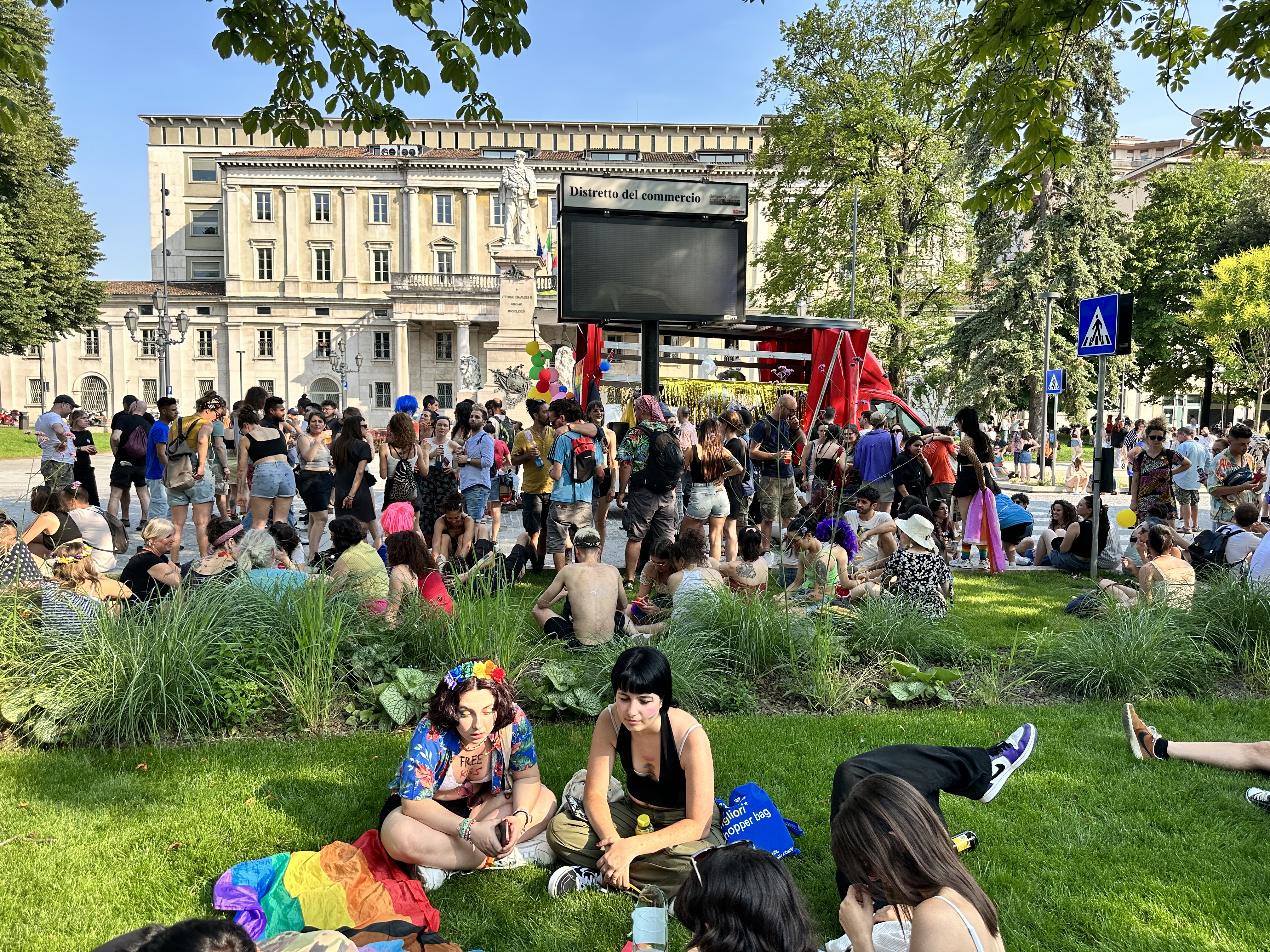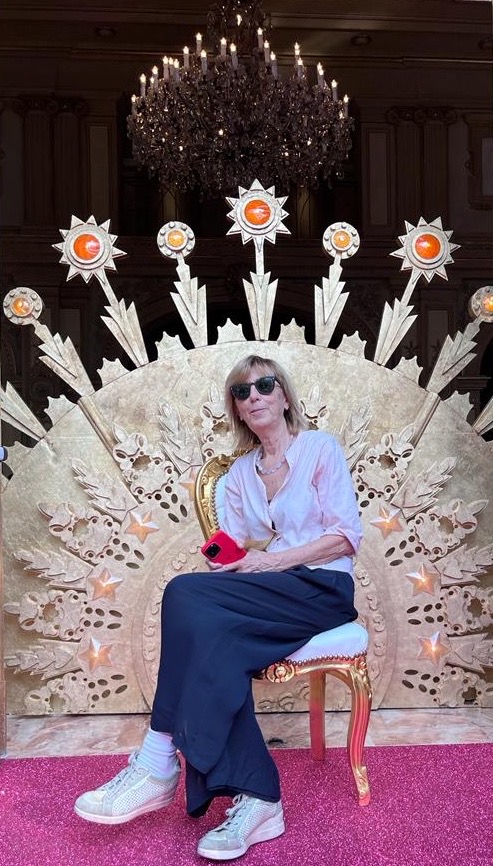SEDERSI NELLO SPAZIO PUBBLICO
C’è un oggetto che, modesto e alla portata dell’esperienza quotidiana, racchiude uno scrigno di ragionamenti sul nostro vivere insieme: nella mia esperienza di progettazione degli spazi pubblici ho potuto affrontarlo in tutta la ricchezza dei suoi contenuti.
È la PANCHINA.
Esposta alle mutevolezze del clima e delle percezioni, raccoglie dentro sé un’ineusaribile quantità di racconti e come uno scrigno può aprirsi regalando storie che parlano della città e del nostro modo di abitarla.
Tutti, ma proprio tutti, hanno qualcosa da dire sulla panchina.
Con sedie e divani la panchina condivide la FUNZIONE: serve per sedersi e quindi per consentire un’attività irrinunciabile per la nostra specie che, dopo aver conquistato la posizione eretta del bipede, deve necessariamente intervallare la verticalità con posizioni idonee a riposare la schiena, le gambe, l’assetto posturale dei muscoli e delle ossa.
La panchina è un fatto ERGONOMICO.
Dentro i TREND DEMOGRAFICI attuali in questa parte del mondo, sedersi diventa sempre più importante: stiamo invecchiando e con noi le nostre schiene e le nostre gambe.
La panchina è un elemento materiale e statico: in quanto tale è FORMA, DESIGN, PRODUZIONE, certificazioni e regolamenti, prestazioni che resistono all’usura, che non feriscono, che non smagliano le calze di nylon, che non producono schegge, che non incastrano le dita dei bambini….
Con sedie e divani la panchina condivide la sua natura di ARREDO, cioè di elemento aggiunto, per molti versi marginale, intercambiabile, sostituibile e variamente declinabile.
E’ ARREDO URBANO che interpreta la dimensione cangiante e tattica del TRANSITORIO.
Anche se strettamente imparentata con loro, la panchina si differenzia dalle sedie e dai divani che stazionano nei nostri spazi PRIVATI, perché è un oggetto PUBBLICO, non di qualcuno, ma di tutti.
Non abita le stanze delle nostre case, ma i parchi, le strade, le stazioni, i viali. Non abita le abitudini protette e intime degli SPAZI INTERNI, ma quelle esposte e rischiose degli SPAZI ESTERNI.
Non è un messaggio che appartiene al nostro personale diario, è una PAROLA SOCIALE.
Nella panchina l’IO diventa NOI.
Le sedie e i divani del privato accolgono solo le persone che passano attraverso il filtro delle nostre porte, i nostri amici, i nostri ospiti.
La panchina invece è un OGGETTO COABITATO SENZA FILTRI che selezionano.
Atleti e anziani, mamme e bambini, innamorati e amici, solitari lettori di giornali, badanti ai parchi con i loro anziani oppure tra di loro, nei momenti di libera uscita. Impiegati che consumano lo snack della pausa pranzo estiva, gitanti stanchi. Per qualcuno è una sosta breve, in attesa di qualcuna altro o per tirare il fiato per un attimo. Per altri è una sosta più lunga, pensionati e umarell che trascorrono il loro tempo fuori dalle loro solitudini alla ricerca degli altri, per vedere la vita che scorre e per farsi vedere. Per qualcuno è un pretesto per fare due chiacchiere, per conoscere qualcun altro. Flâneurs e flâneuses, amiche che guardano i giovanotti che passano, giovanotti che guardano le signorine in transito.
Aldilà della lettura strettamente ergonomica, SEDERSI NON È UNA SCIENZA ESATTA: ci sono modi diversi che si trasformano nel tempo e cambiano con gli stili di vita.
Sedersi infatti non è solo un BISOGNO, ma è anche un DESIDERIO: compiendo questa azione, si compie una rappresentazione di sé, per sé e per gli altri.
Sedersi sulla panchina nella scena pubblica è un’INTERPRETAZIONE TEATRALE. E vedi i ragazzi a cavalcioni, informali ed elastici, i signori distinti e composti, le signore con le gambe accavallate come si conviene al galateo, gli ubriachi sdraiati, i buskers che rincorrono un’armonia perduta, i writers alla ricerca di pagine da scrivere, i vandali di gesti eclatanti….
Sedersi è un’azione che ci racconta le DIFFERENZE e quindi, inevitabilmente, i CONFLITTI possibili.
La panchina è un gesto POLITICO: è la declinazione del concetto di DECORO, di quello che è gradito e di quello che è sgradito ai sistemi ideologici. Nei Consigli Comunali si consumano lotte estenuanti sulle panchine e sui loro braccioli… si, no, NON VOGLIAMO I BIVACCHI!
La panchina diventa programma elettorale, impegni per la SICUREZZA e la PULIZIA e se lì si siedono solo loro (ndt gli extra comunitari) alla fine è meglio non mettercela proprio.
La panchina è SELFIE, autorappresentazione….e te la piazzano lì , lungo gli itinerari turistici, objet d'art ingigantito per immortalare i paesaggi e te dentro di loro.
E’ ROSSA come il sangue delle donne uccise ogni anno in questo paese incivile….Porta messaggi, porta poesie. A volte diventa monumento.
C’è tutto nella panchina e , in questo momento di crisi delle città, se apri lo scrigno ci trovi nel ruolo di protagonista, la fantasmagoria della coabitazione.
ENGLISH TEXT
SITTING IN THE PUBLIC SPACE
There is an object that, modest and within the reach of everyday experience, holds a treasure trove of reasoning about our living together: in my experience of designing public spaces, I have been able to address it in all the richness of its contents.
It is the BENCH.
Exposed to the mutability of climate and perceptions, it holds within it an inextinguishable quantity of stories, and like a treasure chest it can open up to reveal stories about the city and the way we live in it.
Everyone, but really everyone, has something to say about the bench.
With chairs and sofas, the bench shares a FUNCTION: it is used to sit and thus to allow an activity that is indispensable for our species which, after having conquered the upright position of the biped, must necessarily intersperse verticality with positions suitable for resting the back, the legs, and the postural structure of muscles and bones.
The bench is an ERGONOMIC fact.
Within the current DEMOGRAPHIC TRENDS in this part of the world, sitting is becoming increasingly important: we are getting older and with us our backs and legs.
The bench is a material and static element: as such, it is SHAPE, DESIGN, PRODUCTION, certifications and regulations, performance that resists wear and tear, that does not injure, that does not splinter nylons, that does not jam children's fingers....
With chairs and sofas, the bench shares its nature of FURNITURE, that is, of an added element, in many ways marginal, interchangeable, replaceable and variously declining.
It is URBAN ARREDO that interprets the changing and tactical dimension of the TRANSITORY.
Although closely related to them, the bench differs from the chairs and sofas that are stationed in our PRIVATE spaces, because it is a PUBLIC object, not someone's, but everyone's.
It does not inhabit the rooms of our homes, but the parks, the streets, the stations, the avenues. It does not inhabit the protected and intimate habits of INDOOR SPACES, but the exposed and risky ones of OUTDOOR SPACES.
It is not a message that belongs to our personal diary, it is a SOCIAL WORD.
In the bench the I becomes WE.
The chairs and sofas of the private only welcome the people who pass through the filter of our doors, our friends, our guests.
The bench, on the other hand, is a COABITATED OBJECT WITHOUT FILTERS that select.
Athletes and the elderly, mothers and children, lovers and friends, lonely newspaper readers, carers at the parks with their elders or with each other in their free time. Office workers eating their summer lunch break snack, tired day-trippers. For some it is a short stop, waiting for someone else or to catch their breath for a moment. For others it is a longer stop, pensioners and umarells spending their time out of their solitudes in search of others, to watch life go by and to be seen. For some it is a pretext to have a chat, to get to know someone else. Flâneurs and flâneuses, girlfriends watching young men passing by, young men watching young ladies in transit.
Beyond the strictly ergonomic reading, SITTING IS NOT AN EXACT SCIENCE: there are different ways that change over time and change with lifestyles.
Indeed, sitting is not only a NEED, it is also a DESIRE: by performing this action, one makes a representation of oneself, for oneself and for others.
Sitting on the bench in the public scene is a THEATRICAL INTERPRETATION. And you see the boys straddling the bench, informal and elastic, the gentlemen distinguished and composed, the ladies with their legs crossed as befits etiquette, the drunks lying down, the buskers chasing a lost harmony, the writers in search of pages to write, the vandals of striking gestures....
Sitting is an action that tells us about the DIFFERENCES and thus, inevitably, the possible CONFLICTS.
The bench is a POLITICAL gesture: it is the declination of the concept of DECOR, of what is liked and what is disliked by ideological systems. In City Councils, exhausting fights are waged over benches and their armrests... yes, no, WE DON'T WANT THE BENCHES!
The bench becomes an electoral programme, pledges for SAFETY and CLEANLINESS, and if only they (non-EU citizens) sit there, in the end it is better not to put it there at all.
The bench is SELFIE, self-representation....and they place it there, along tourist routes, magnified objet d'art to immortalise landscapes and you inside them.
It is RED like the blood of the women killed every year in this uncivilised country....It carries messages, it carries poems. Sometimes it becomes a monument.
There is everything in the bench and, in this moment of crisis in the cities, if you open the casket you will find in it the phantasmagoria of cohabitation.


